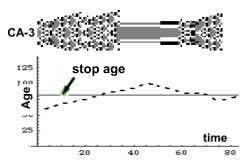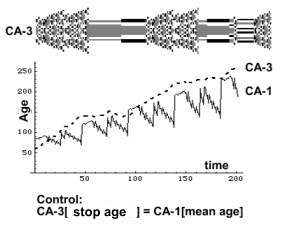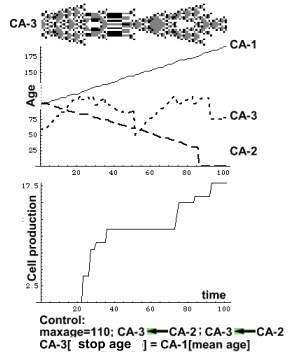 |
Activity and rest
The CA is driven
by a continuous accumulation of age (resources). A parameter stop
age sets
the age above which a CA stops aging. When one of its cells reaches this threshold, CA pauses and rests. Unlike
max age which initiates CA differentiation, stop age simply
stops aging. When CA rests, it utilizes age for its existence, and age
declines. The rate of decline is the negative of age accumulation rate
in an active CA. The experiment
below illustrates this process. The curve depicts roughly what happens.
It depicts CA-3 maximal age, while the CA responds to the aging
of individual cells.
 |
 |
The next experiment describes
a differentiating CA-3 with delays. During the experiment CA-3 received
two age increments from CA-2, otherwise it would not differentiate. Note
the prolonged horizontal segment in the production curve, which results
in part due to CA resting.
 |
nca=3 zygote -> effect[no
1000]; go[63]; go109]; restoreparams donate[3, 2];; move[3, nowdat[[1 ,
7]]]; go[100]; dying[3, 110, 0]; donate[3, 2]; donate[3, 2]; move[3, nowdat[[1,7]]]; go[100].